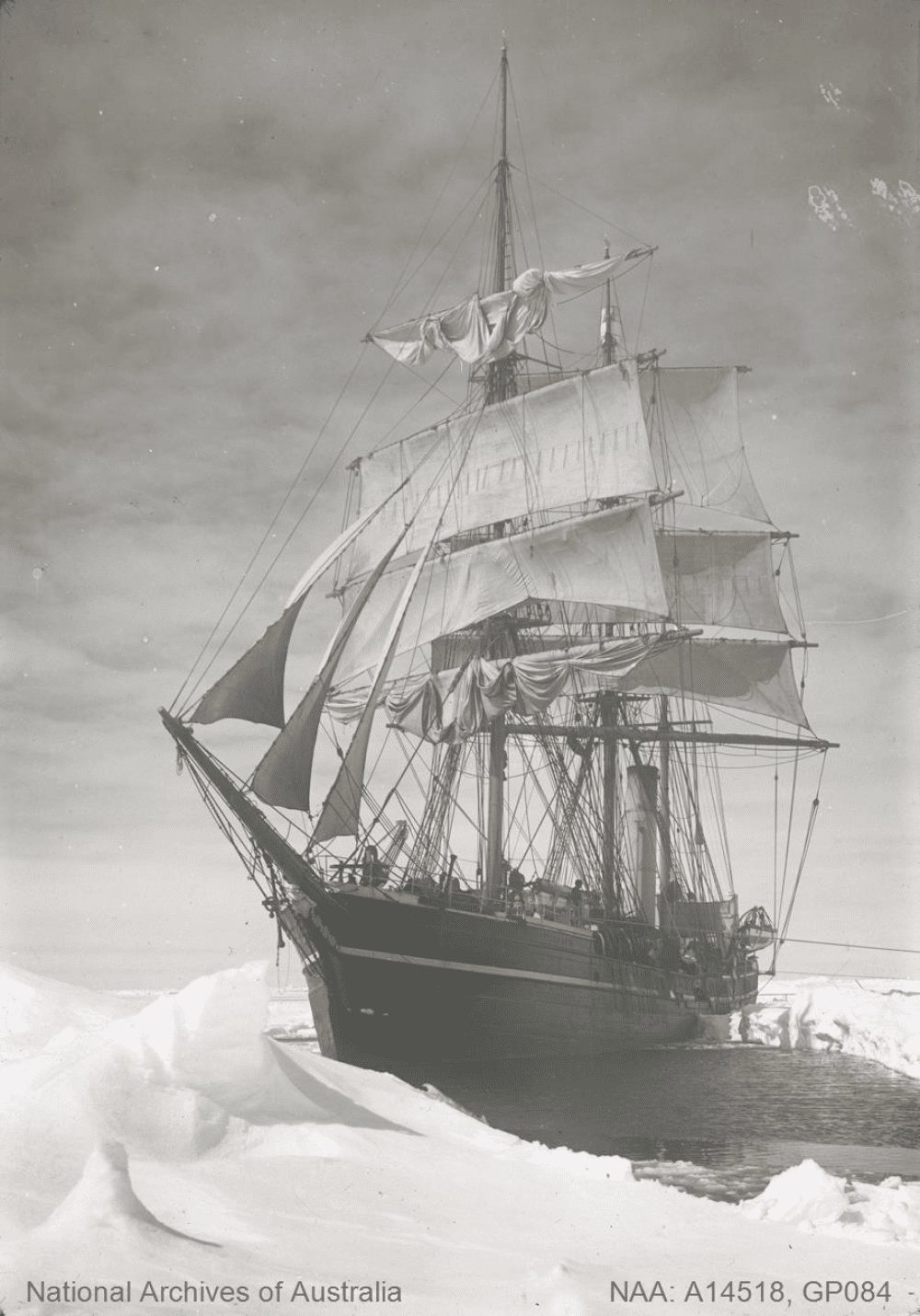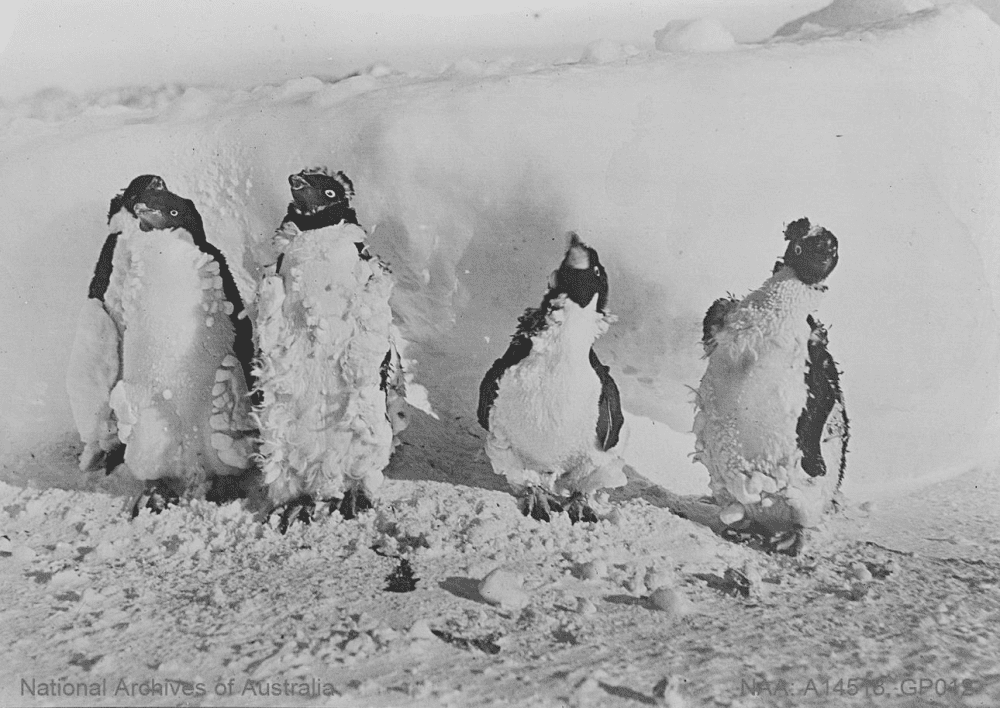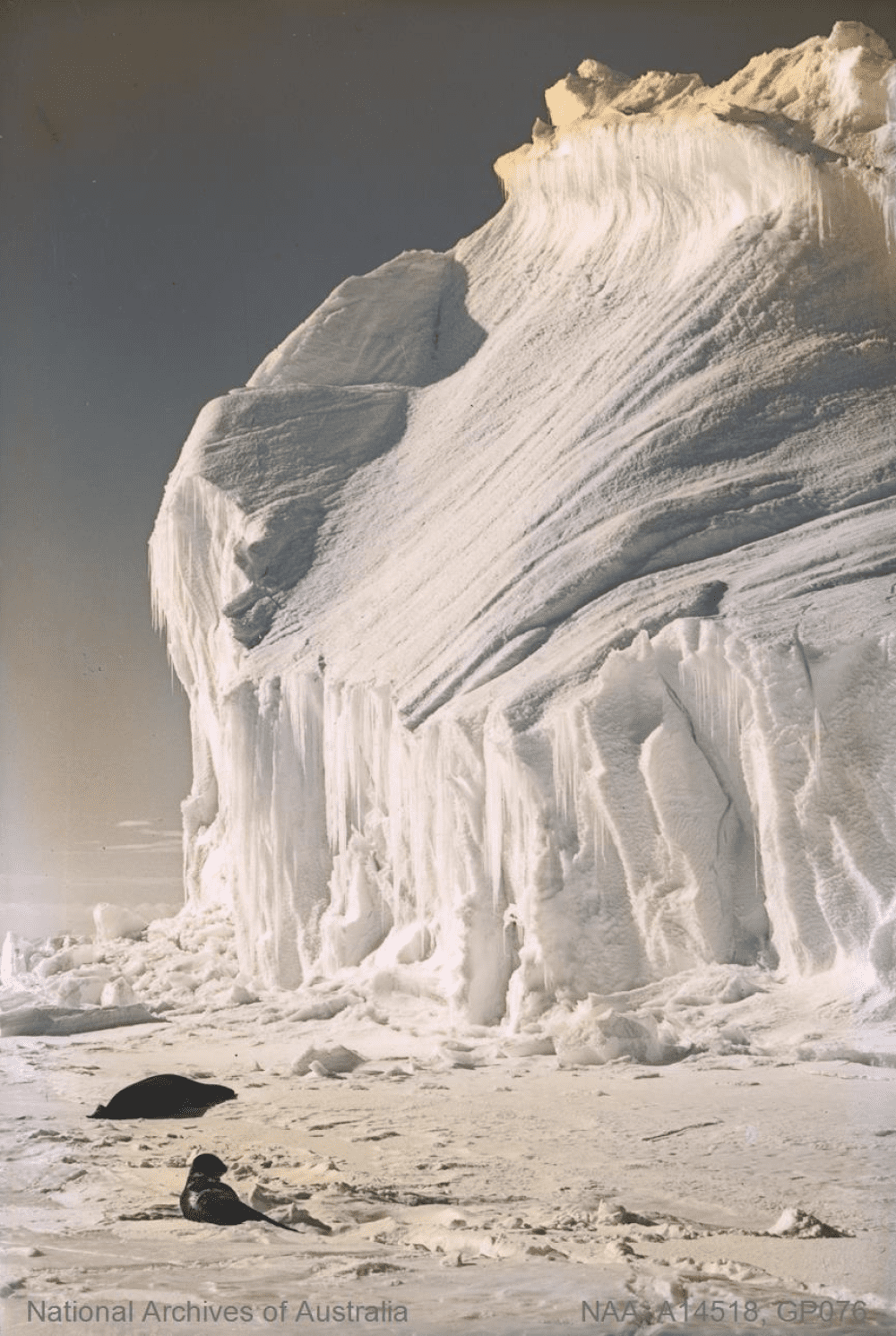Hundreds of Antarctic exploration photographs taken over 100 years ago have been made accessible to the public thanks to National Archives of Australia (NAA), who recently released a collection of photographs, glass plate negatives, and lantern slides. The incredible images document early 20th century British and Australian Antarctic explorers, and include some absolute zingers for animal portraits.
The snapshots into the past were released from the Australian Antarctic Division who have transferred them to the NAA for digitization so that they can be enjoyed by the public for generations to come. It means that anyone can now take a walk through Antarctica as it was over a century ago, and we’ve got to say – there’s just something epic about seeing a ship with sails locked in the Antarctic ice.

Vintage peril is so much more photogenic than modern peril. Image credit: National Archives of Australia
“The images provide a unique glimpse of the difficult conditions the explorers faced,” said Director-General of NAA, Mr Simon Froude, in a statement. “There are fabulous photos of the unique wildlife, as well as photos depicting the science and technology of the time.”
“Photographic portraits of Antarctic personalities such as Joseph Kinsey, Ernest Shackleton, Douglas Mawson and Frank Stillwell are included in the collection, as well as images highlighting the ingenuity of expedition members navigating life on the ice and aboard the ship.”

A group of rather ruffled Adélie penguins. Image credit: National Archive of Australia
Most of the photographs included in the digitized collection were taken at the start of the 20th century by John King Davis, who captained the Aurora during several Australasian Antarctic Expeditions between 1911 and 1914. The English-born Australian explorer and navigator had a hugely influential career across several Antarctic voyages, and was awarded both for his contributions to science as well as serving in the military. He’s remembered to this day on the White Continent with the naming of Cape Davis and Davis Station.
The NAA’s incredible collection also includes photographs taken by Frank Hurley, an Australian photographer and adventurer who also documented both world wars for the Australian forces. Hurley also joined Ernest Shackleton’s British Imperial Trans-Antarctic expedition from 1914-1917 as official photographer and filmmaker. A turbulent voyage he and all the other crew survived, despite Endurance ending up at the bottom of the ocean (which we recently discovered has a new crew).

Having been taken over a century ago, much of the Antarctic landscape would look different today. Image credit: National Archives of Australia
“I’m delighted this collection will be preserved within the National Archives for future generations to access,” continued Mr Froude. “These photographs compliment other national collections documenting Australia’s exploration and research in Antarctica.”
Whether you’re simply curious or looking for some seriously inspiring creative writing prompts, the photographs are publicly available now on RecordSearch.
Source Link: See Rare Antarctic Expedition Photographs From 100 Years Ago Online For The First Time